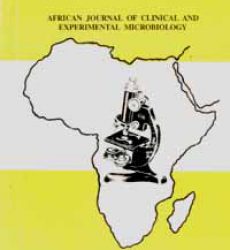Abstract
The quality of water from River Sokoto was assessed to determine its bacterial load and types. Standard bacteriological techniques were used to perform the total heterotrophic bacteria, faecal coliform and enterococci counts of water samples collected from six sampling points on the river and distribution of bacteria in the water samples was also determined using standard procedures. The study indicated high heterotrophic bacteria, faecal coliform and enterococci counts above permissible limits for drinking and recreational waters according to World Health Organization (WHO) and United States Environmental Protection Agency (USEPA). A total of 434 bacteria organisms were isolated comprising nineteen different species. Among the Enterobacteriaceae, Escherichia coli, which are human pathogenic organisms, had the highest percentage (11.98%) followed by Enterobacter aerogenes and Klebsiella pneumoniae subspecies pneumonia. Pseudomonas aeruginosaconstituted the majority of non-Enterobacteriaceae Gram negative organisms. Staphylococcus aureus was the highest among the Gram positive organisms followed by Staphylococcus saprophyticus (5.99%). Other isolates in significant numbers are Streptococcus faecalis, Bacillus subtilis, Elizabethkingia meningoseptica and Aeromonas sobria. Bacteria of aquatic habitat like Providencia rettgeri, Raoultella ornithinolytica, Staphylococcus cohnii subspecies urealyticus and Staphylococcus chromogenes that have not been isolated before in the study area were also isolated. River Sokoto predominantly contained E. coli which is an indication of faecal contamination and that makes it unsuitable for drinking and agricultural uses. People in the area should be encouraged to practice adequate sanitation.
Key words: River Sokoto, water quality, bacterial pathogens, E. coli, health implication.
Download full journal in PDF below

